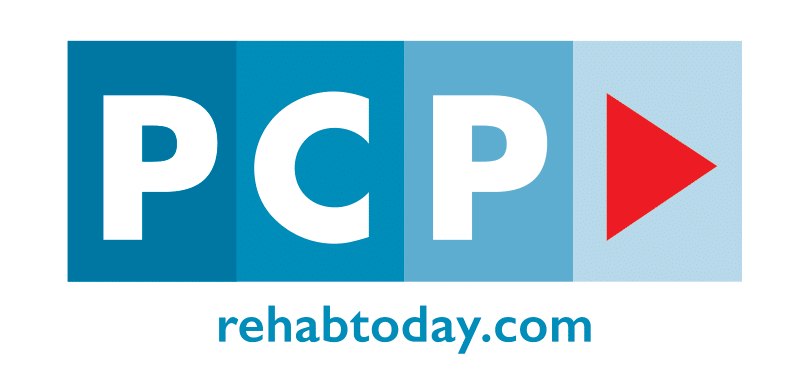Nitazenes, a class of potent synthetic opioids, have recently emerged as a significant concern in the realm of drug abuse and public health. These substances are a new synthetic opioid, lab-made to mimic natural opioids like heroin but with much greater potency. Known for their extreme potency, some nitazenes are hundreds of times stronger than heroin, greatly increasing the risk of overdose and harm. They pose a severe risk of overdose and addiction, eclipsing even the notorious fentanyl in terms of danger.
Key Takeaways
-
Nitazenes are synthetic opioids more potent than fentanyl.
-
Nitazenes have been detected in the UK and are contributing to drug-related harms there.
-
They have been linked to a surge in overdose deaths.
-
Understanding, treatment, and prevention strategies are essential in combating their impact.
What Are Nitazenes?
Nitazenes, also known as benzimidazole opioids, are a novel group of synthetic opioids. As a type of synthetic opioid, they carry unique risks due to their high potency and unpredictable effects. They are distinguished by their benzimidazole structure, which contributes to their high potency and efficacy as pain relievers. However, this potency also makes them extremely dangerous, with a risk of overdose and addiction far exceeding that of traditional opioids. Nitazenes are often sold illicitly, sometimes mixed with other substances, which increases the risk of unintentional exposure.
Historical Context and Recent Emergence
The history of nitazenes dates back several decades, but their emergence as a drug of abuse is relatively recent. These compounds were initially developed for research purposes but have found their way into illicit drug markets, contributing significantly to the ongoing opioid crisis. In recent years, nitazenes have been detected in toxicology reports and drug seizures, underscoring their growing presence in the illicit drug supply.
Information about nitazenes is continually being updated as new cases and compounds are identified.
The Role of Nitazenes in the Opioid Crisis
The opioid crisis, a major public health challenge, has been exacerbated by the introduction of nitazenes. These substances, often found mixed with other drugs like heroin or fentanyl, as well as other substances such as over-the-counter medications and depressants, have led to a significant increase in overdose incidents and fatalities. Nitazenes are frequently present in toxicology reports of overdose deaths, making it crucial to test for their presence in suspected cases. The number of nitazene-related deaths and detections continues to rise, underscoring the growing impact of these compounds.
Health Risks Associated with Nitazenes
Nitazenes are alarmingly potent, with some variants estimated to be up to 40 times stronger than fentanyl. The effects of nitazenes can include intense euphoria, profound sedation, respiratory depression, and, with long-term use, increased risk of dependence and withdrawal symptoms. This high potency dramatically increases the higher risk of overdose and death, especially when nitazenes are combined with other potent substances. It is crucial to start with a low dose to reduce the risk of overdose. Mixing nitazenes with alcohol can further increase the risk of respiratory depression and overdose, and should be strictly avoided. The primary risks include respiratory depression, addiction, and death.
Societal and Economic Impact
The rise of nitazenes has profound societal and economic implications. The increased rate of addiction and overdose deaths not only affects individuals and families but also places a significant burden on healthcare systems and law enforcement agencies. Nitazene addiction can negatively impact a person’s ability to work and fulfill daily responsibilities, leading to broader economic consequences.
Regulatory Challenges and Legal Status
Regulating and controlling the distribution of nitazenes poses a significant challenge due to their synthetic nature and the ease with which they can be modified. Legal status varies across regions, with many countries struggling to keep up with the evolving nature of these substances. Coordinated international efforts are required to effectively regulate and control the distribution of nitazenes.
Nitazenes and Their Impacts
Aspect | Detail |
Potency | Up to 40x stronger than fentanyl |
Risks | Overdose, respiratory depression, addiction |
Societal Impact | Increased healthcare and law enforcement burden |
Regulatory Challenges | Difficulty in tracking and controlling distribution |
Treatment and Recovery Options for Nitazenes

Treatment for nitazene addiction follows the general protocol for opioid addiction, focusing on detoxification and rehabilitation. However, the extreme potency of these substances means they carry a higher risk of overdose, making emergency preparedness essential. It is important to have naloxone available, as it can temporarily reverse the effects of opioid overdose, particularly respiratory depression. Safety measures are important: do not use alone, start with a low dose, and always have naloxone on hand. If overdose symptoms are observed, call for medical help and request an ambulance immediately.
Individuals can find resources and support for recovery through local health services, support groups, and online directories.
Role of Rehab Centers and Support Systems
Rehabilitation centres for opioid addiction are vital in the battle against nitazene addiction, providing a safe and supportive environment for individuals to recover. These centres are equipped with the necessary resources and expertise to address the unique challenges posed by nitazene addiction.
Comprehensive Treatment Plans
Rehab centres offer comprehensive treatment plans tailored to the specific needs of each individual. These plans often include:
Medical Detoxification: The first step in treatment, medical detox, involves safely removing the drug from the body under medical supervision. This process helps manage withdrawal symptoms, which can be particularly intense with nitazene due to its high potency.
Therapy and Counselling: Various forms of therapy, including individual, group, and family counseling, are used to address the psychological aspects of addiction. Cognitive-behavioural therapy (CBT) is particularly effective in helping individuals understand their addiction, develop coping strategies, and prevent relapse.
Medication-Assisted Treatment (MAT): In some cases, medications are used to treat opioid addiction and reduce withdrawal symptoms and cravings, which can be particularly useful in cases of severe addiction to powerful opioids like nitazenes.
Long-Term Support and Aftercare
Long-term support and aftercare are crucial components of the recovery process. Rehab centres often provide:
Support Groups: Participation in support groups like Narcotics Anonymous (NA) or other peer support programmes can provide ongoing encouragement and accountability.
Aftercare Planning: This involves creating a plan for life after treatment, which may include ongoing therapy, support groups, and strategies to avoid relapse.
Lifestyle Changes and Holistic Therapies: Encouraging healthy lifestyle changes, such as exercise and nutrition, and incorporating holistic therapies like yoga and meditation can improve overall well-being and support recovery.
Benzodiazepine and Opioid Addiction: A Comparative Analysis
While discussing nitazenes, it’s imperative to understand their impact in the context of other drug addictions. Benzodiazepine addiction, for instance, is a significant concern, sharing similarities and differences with opioid addiction, including those caused by nitazenes.
Similarities and Differences in Addictions
Both benzodiazepines and opioids, including nitazenes, can lead to physical dependence and addiction. However, the severity and nature of addiction can vary, necessitating different approaches in treatment and rehabilitation.
Global Regulatory Status of Nitazenes
The regulation of nitazenes presents unique challenges due to their synthetic nature and potency. Governments and health organizations worldwide are grappling with creating effective legal frameworks to control these substances, prevent abuse, and provide treatment for those affected.
The Role of International Laws and Policies
The legal status of nitazenes varies globally, with some countries having more stringent regulations than others. The evolving nature of synthetic opioids requires dynamic and responsive legal frameworks to effectively mitigate their impact.
Global Regulatory Status of Nitazenes
Country/Region | Regulatory Status |
USA | Controlled Substance |
EU | Varies by Country |
Canada | Under Review |
Asia | Diverse Regulations |
Strategies for Reducing Availability
Limiting the availability of nitazenes involves cooperation between law enforcement, healthcare providers, and the community. This includes monitoring prescription practices, controlling the supply chain, and providing support for those at risk.
Frequently Asked Questions
What makes nitazenes more dangerous than other opioids?
Nitazenes are significantly more potent than traditional opioids, increasing the risk of overdose and severe health consequences.
How can one identify a nitazene addiction?
Symptoms of nitazene addiction are similar to other opioid addictions, including cravings, withdrawal symptoms, and compulsive drug-seeking behavior.
Are there specific treatments for nitazene addiction?
Treatment typically involves a combination of detoxification, therapy, and support, similar to other opioid addictions but may require specialized approaches due to the drug’s potency.
How can communities help in preventing nitazene abuse?
Communities can play a role by promoting education, supporting harm reduction strategies, and providing resources for treatment and recovery.
Author
-
Dr Otulana is PCP’s longest-serving doctor. He is an experienced Physician with Specialist Interest in Substance Misuse Management and he has a wide range of experience in the assessment and management (including detoxification) of clients with various drug and substance addiction problems. Dr Otulana started practising as a doctor in 2000 and with over 10 years as an Addiction Physician. He is an Advanced Addiction Practitioner Member of Addiction Professionals and also holds the Certificate in Clinical Psychopharmacology (Part 1) of the British Association for Psychopharmacology. He is additionally a strong healthcare services professional with a Master of Business Administration (M.B.A.) degree from Cambridge University Judge Business School.
View all posts








